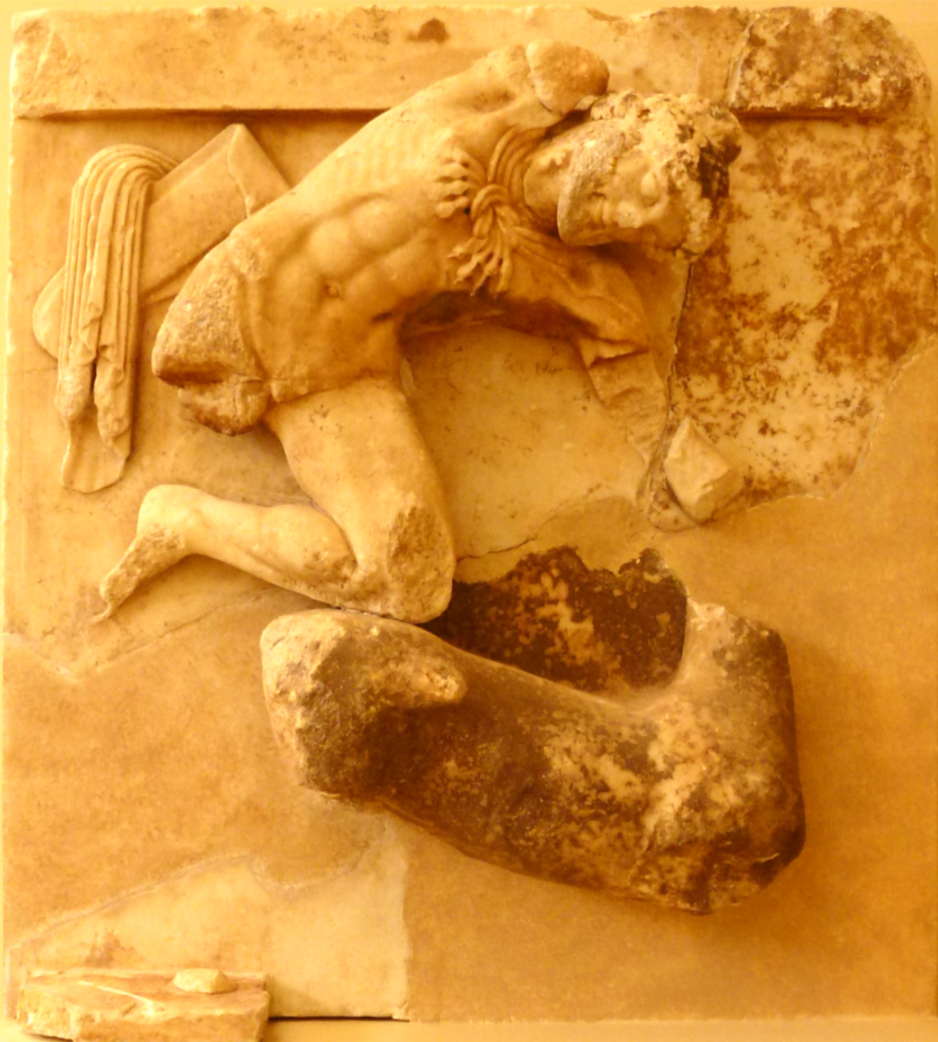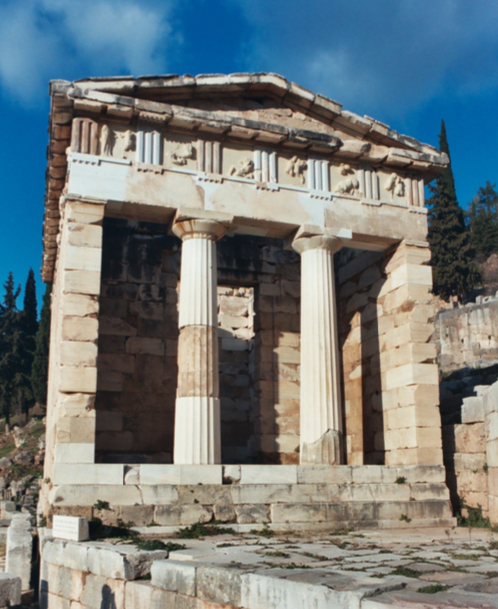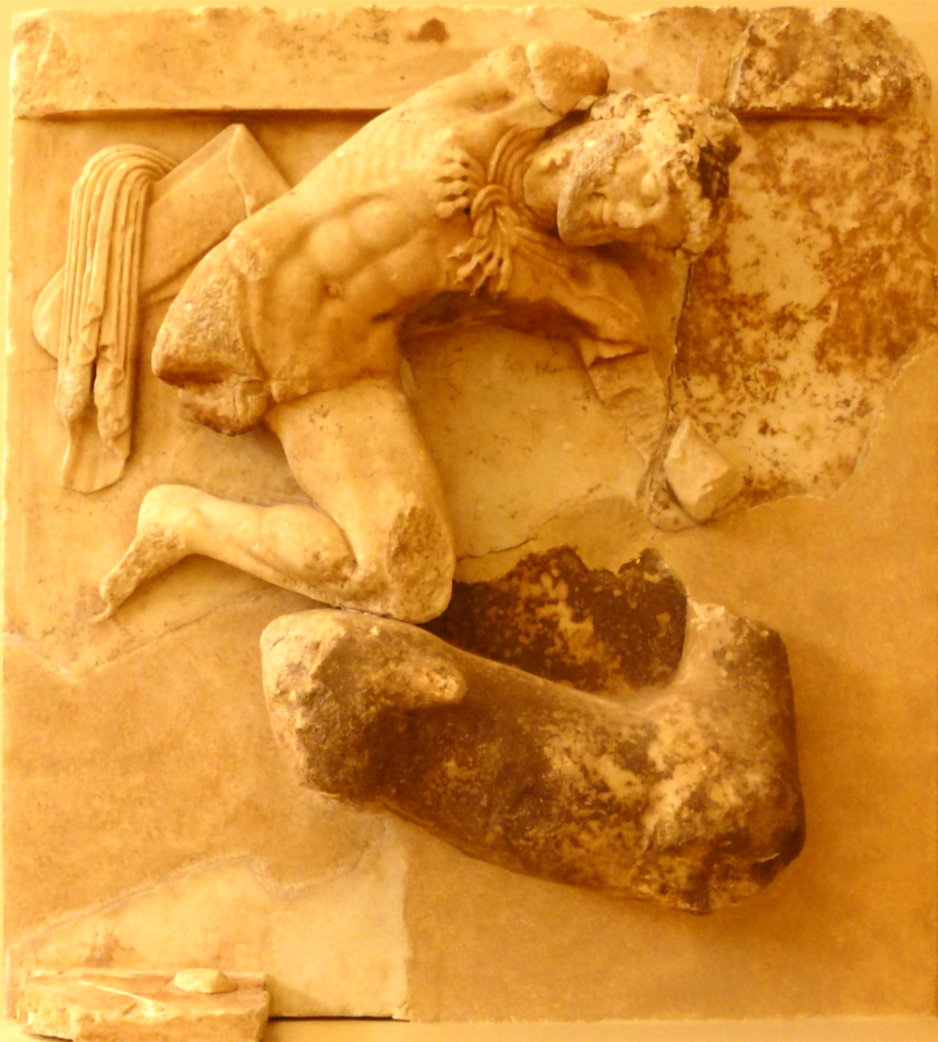Unprescribed: Athenian Treasury, Herakles and the Kerynian hind
1/7
Earn XP
Description and Tags
Name | Mastery | Learn | Test | Matching | Spaced |
|---|
No study sessions yet.
8 Terms

What narrative was displayed on this metope?
One of Herakles’ twelve labours (his 3rd) where he captures the Kerynian hind (a creature that took the form of a female deer with golden antlers and snorted fire) → VERY well known and recognisable
When was this metope dated to?
Early fifth century, c490-480BC

Where was this metope located?
In the Athenian Treasury located in Delphi
Why was the Treasury made?
To commemorate the victory of the Battle of Marathon
What did the metopes on the Treasury depict?
The exploits of Herakles→ Good unity of theme
What material was the metope made from?
Parian marble

What is aesthetically pleasing about this metope? (3)
Dynamic action pose of Herakles fills the metope in an innovative way (Unity of Scale) → e.g. the soft arc of his back vs the sharp diagonals of his bent front leg, arm breaks out of the frame, turned head looking at the hind
Herakles’ characterisation→e.g the intricate knot on the lion skin cloak, exaggerated abdominal muscles, large thighs and calves
Diagonals of Herakles vs Diagonals of the hind suggest they are opposing forces
What is not aesthetically pleasing about this metope? (2)
Severely fractured nature of the hind due to the low tensile strength of marble undermines the narrative
Large awkward space due to the fractured hind